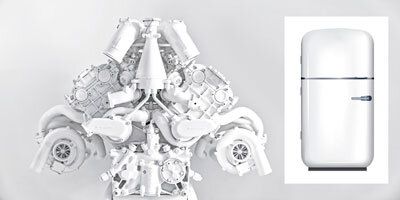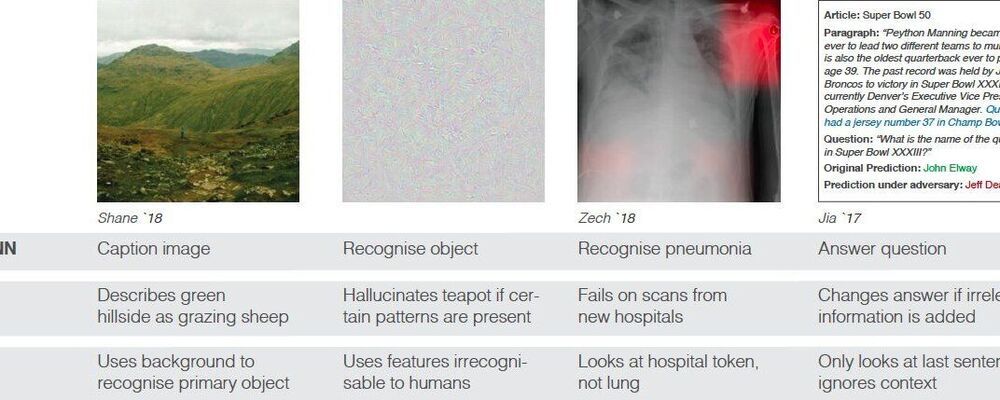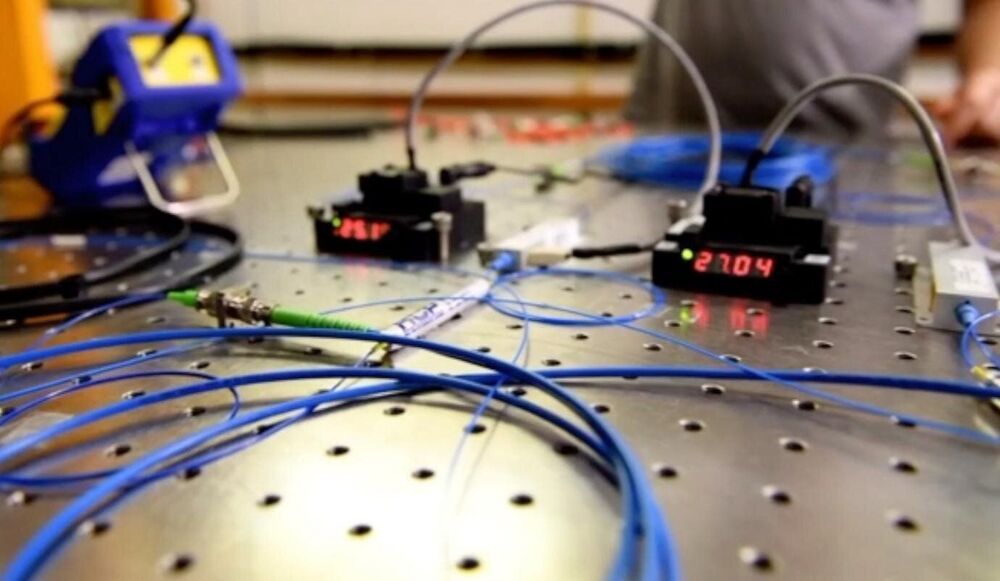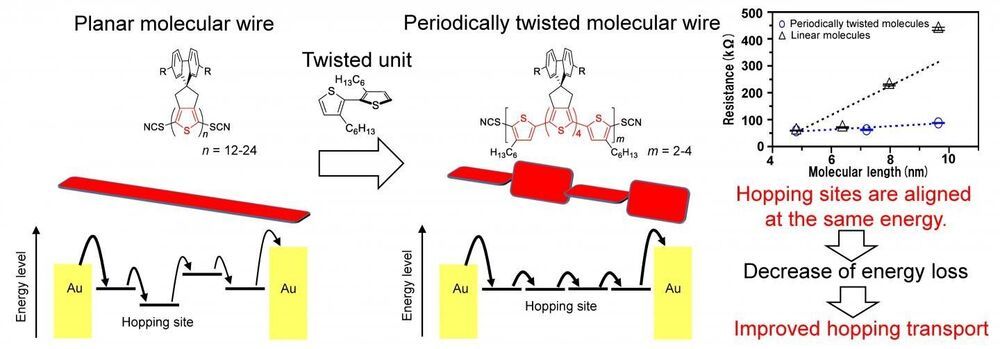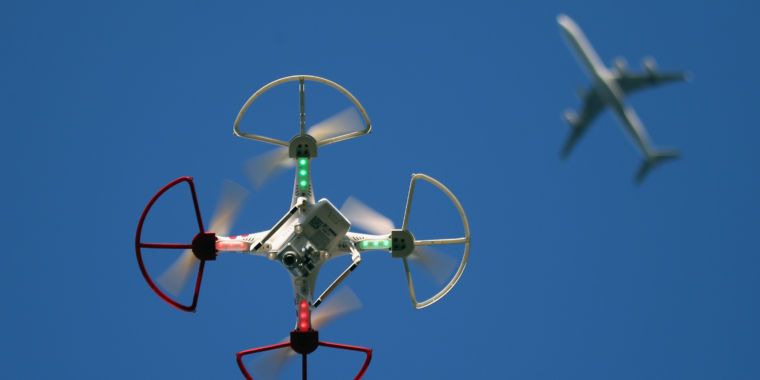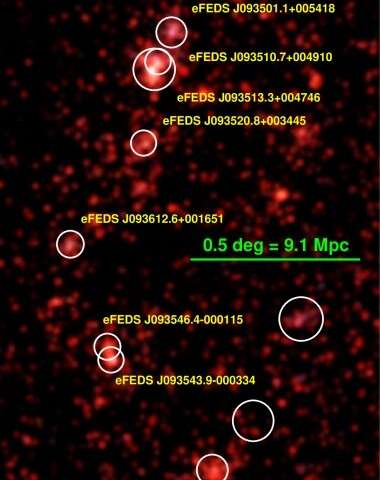The head scientist for Alexa thinks the old benchmark for computing is no longer relevant for today’s AI era.
A multitasking nanomachine that can act as a heat engine and a refrigerator at the same time has been created by RIKEN engineers. The device is one of the first to test how quantum effects, which govern the behavior of particles on the smallest scale, might one day be exploited to enhance the performance of nanotechnologies.
Conventional heat engines and refrigerators work by connecting two pools of fluid. Compressing one pool causes its fluid to heat up, while rapidly expanding the other pool cools its fluid. If these operations are done in a periodic cycle, the pools will exchange energy and the system can be used as either a heat engine or a fridge.
It would be impossible to set up a macroscale machine that does both tasks simultaneously—nor would engineers want to, says Keiji Ono of the RIKEN Advanced Device Laboratory. “Combining a traditional heat engine with a refrigerator would make it a completely useless machine,” he says. “It wouldn’t know what to do.”
Japanese company Sumitomo Forestry has announced a joint development project with Kyoto University to test the idea of using wood as a component in satellite construction. As part of the announcement, officials with Sumitomo Forestry told reporters that work on the project will begin with experiments designed to test different types of wood in extreme environments.
Some of the major components in most satellites include aluminum, Kevlar and aluminum alloys, which are able to withstand both temperature extremes and constant bombardment by radiation—all in a vacuum. Unfortunately, these characteristics also allow satellites to remain in orbit long after their usefulness has ended, resulting in constant additions to the space junk orbiting the planet. According to the World Economic Forum, there are currently approximately 6000 satellites circling the Earth but only 60% of them are still in use. Some in the field have predicted that nearly 1000 satellites will be launched into space each year over the coming decade. Considering their lifespan, this suggests there could be thousands more dead satellites orbiting the planet in the coming years. This space debris poses a significant threat to other satellites (they all travel thousands of miles per hour) and also to manned space missions.
Albert Einstein once said, “You have to learn the rules of the game, and then you have to play better than anyone else.” That could well be the motto at DeepMind, as a new report reveals it has developed a program that can master complex games without even knowing the rules.
DeepMind, a subsidiary of Alphabet, has previously made groundbreaking strides using reinforcement learning to teach programs to master the Chinese board game Go and the Japanese strategy game Shogi, as well as chess and challenging Atari video games. In all those instances, computers were given the rules of the game.
But Nature reported today that DeepMind’s MuZero has accomplished the same feats—and in some instances, beat the earlier programs—without first learning the rules.
Over the past few years, artificial intelligence (AI) tools, particularly deep neural networks, have achieved remarkable results on a number of tasks. However, recent studies have found that these computational techniques have a number of limitations. In a recent paper published in Nature Machine Intelligence, researchers at Tübingen and Toronto universities explored and discussed a problem known as ‘shortcut learning’ that appears to underpin many of the shortcomings of deep neural networks identified in recent years.
“I decided to start working on this project during a science-related travel in the U.S., together with Claudio Michaelis, a dear colleague and friend of mine,” Robert Geirhos, one of the researchers who carried out the study, told TechXplore. “We first attended a deep learning conference, then visited an animal research laboratory, and finally, a human vision conference. Somewhat surprisingly, we noticed the very same pattern in very different settings: ‘shortcut learning,’ or ‘cheating,’ appeared to be a common characteristic across both artificial and biological intelligence.”
Geirhos and Michaelis believed that shortcut learning, the phenomenon they observed, could explain the discrepancy between the excellent performance and iconic failures of many deep neural networks. To investigate this idea further, they teamed up with other colleagues, including Jörn-Henrik Jacobsen, Richard Zemel, Wieland Brendel, Matthias Bethge and Felix Wichmann.
Movie ratings can determine a movie’s appeal to consumers and the size of its potential audience. Thus, they have an impact on a film’s bottom line. Typically, humans do the tedious task of manually rating a movie based on viewing the movie and making decisions on the presence of violence, drug abuse and sexual content.
Now, researchers at the USC Viterbi School of Engineering, armed with artificial intelligence tools, can rate a movie’s content in a matter of seconds, based on the movie script and before a single scene is shot. Such an approach could allow movie executives the ability to design a movie rating in advance and as desired, by making the appropriate edits on a script and before the shooting of a single scene. Beyond the potential financial impact, such instantaneous feedback would allow storytellers and decision-makers to reflect on the content they are creating for the public and the impact such content might have on viewers.
Using artificial intelligence applied to scripts, Shrikanth Narayanan, University Professor and Niki & C. L. Max Nikias Chair in Engineering, and a team of researchers from the Signal Analysis and Interpretation Lab (SAIL) at USC Viterbi, have demonstrated that linguistic cues can effectively signal behaviors on violent acts, drug abuse and sexual content (actions that are often the basis for a film’s ratings) about to be taken by a film’s characters.
A viable quantum internet—a network in which information stored in qubits is shared over long distances through entanglement—would transform the fields of data storage, precision sensing and computing, ushering in a new era of communication.
This month, scientists at Fermi National Accelerator Laboratory—a U.S. Department of Energy national laboratory affiliated with the University of Chicago—along with partners at five institutions took a significant step in the direction of realizing a quantum internet.
In a paper published in PRX Quantum, the team presents for the first time a demonstration of a sustained, long-distance teleportation of qubits made of photons (particles of light) with fidelity greater than 90%.
Researchers at Osaka University synthesized twisted molecular wires just one molecule thick that can conduct electricity with less resistance compared with previous devices. This work may lead to carbon-based electronic devices that require fewer toxic materials or harsh processing methods.
Organic conductors, which are carbon-based materials that can conduct electricity, are an exciting new technology. Compared with conventional silicon electronics, organic conductors can be synthesized more easily, and can even be made into molecular wires. However, these structures suffer from reduced electrical conductivity, which prevents them from being used in consumer devices. Now, a team of researchers from The Institute of Scientific and Industrial Research and the Graduate School of Engineering Science at Osaka University has developed a new kind of molecular wire made from oligothiophene molecules with periodic twists that can carry electric current with less resistance.
Molecular wires are composed by several-nanometer-scale long molecules that have alternating single and double chemical bonds. Orbitals, which are states that electrons can occupy around an atom or molecule, can be localized or extended in space. In this case, the pi orbitals from individual atoms overlap to form large “islands” that electrons can hop between. Because electrons can hop most efficiently between levels that are close in energy, fluctuations in the polymer chain can create energy barriers. “The mobility of charges, and thus the overall conductivity of the molecular wire, can be improved if the charge mobility can be improved by suppressing such fluctuations,” first author Yutaka Ie says.
Containing various structures with a range of masses, from massive and dense clusters of galaxies to low-density bridges, filaments and sheets of matter, superclusters are among the largest structures in the known universe. Finding and investigating superclusters in detail could be essential in order to improve our understanding of the formation and evolution of large cosmic filaments.
Now, a group of astronomers led by Vittorio Ghirardini of the Max Planck Institute for Extraterrestrial Physics in Garching, Germany, reports the discovery of a new supercluster. The structure was identified by the eFEDS survey during its Performance Verification (PV) phase.

